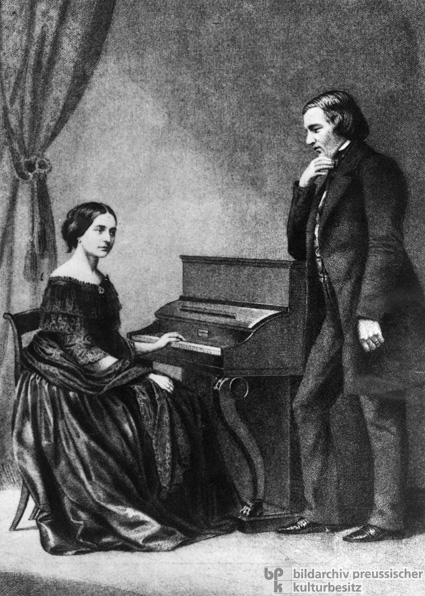I know I don’t have a whole lot of time to write this post today, so I’ll try make it brief (and start with the easiest piece).
 Learning Robert Schumann’s Spanische Liebeslieder was fairly straightforward for me. The idea to put parts of this song cycle into my recital program was actually Benjamin’s, mostly because we thought it might be nice to have a set that involved all three of us (me, Benjamin, and Jeremy), since each composer was going to be accompanying me for his own works. Spanische Liebeslieder was written for four hands and voice; in point of fact, the entire song cycle was written for soprano, alto, tenor, and baritone, with some movements as duets and quartets.
Learning Robert Schumann’s Spanische Liebeslieder was fairly straightforward for me. The idea to put parts of this song cycle into my recital program was actually Benjamin’s, mostly because we thought it might be nice to have a set that involved all three of us (me, Benjamin, and Jeremy), since each composer was going to be accompanying me for his own works. Spanische Liebeslieder was written for four hands and voice; in point of fact, the entire song cycle was written for soprano, alto, tenor, and baritone, with some movements as duets and quartets.
I chose three songs within the cycle to perform, only one of which was actually written for alto. Luckily, the entire work is available on this WONDERFUL website called IMLSP, which is a free online library for public domain sheet music. I downloaded what I needed and got to work.
Different singers learn music differently. Personally, I prefer to first read through the music by myself at a piano. If the piano part is too complicated or the harmonies too difficult for me to hear, then I will try to find several different recordings of a piece and listen so I can get an idea of how the piece in its entirety sounds. It is very important for me to try to find more than one recording, because I hate it when singers fall into the trap of imitating recordings. No matter how good the person on the recording is, I prefer to find my own interpretation of the music in the learning process.
However, vocal coaches and accompanists can get expensive, so practicing with a recording is sometimes the best thing I can do to learn music quickly. If the accompaniment is fairly simple and straightforward, I will create my own accompaniment track using Finale and my electronic keyboard. The music input process can be pretty time-consuming, though, so I don’t usually do it unless I know I have time to play on the computer.
Here’s one of my accompaniment tracks for the first Schumann piece: “Tief im Herzen.”
[audio:http://www.supermaren.com/Music/Schumann-Tief_im_Herzen.mp3]
(If you’re interested in using this track for yourself, you can download it here)
Once the music is firmly in my head, I don’t need an accompaniment track as much; the tape loop in my brain will do most of the accompanying. That’s when I start the memorization process. I try to do my memorization at odd hours of the day, such as before bed or in the shower: any time I have a little down time.
Unfortunately, I haven’t had a really good amount of time to devote to memorization daily, and the recital is 4 days away! I knew I wasn’t going to be able to have the Boyle and Gill pieces memorized, but I thought surely I could have the Schumann songs well-cemented in my head. The music is there, for sure, but for some reason, the words are getting jumbled around in my head. My friend Amy wrote about a memorization technique on her blog, and I’ve been trying it with this Schumann. Wish me luck.
I will be performing excerpts from Schumann’s Spanische Liebeslieder on my recital, “Heroes, Lovers, and Dreamers,” on Saturday, March 20, at 8:00 p.m. at St. Mark’s Church in Philadelphia.

 So I had all these grand plans for writing posts about how exactly I have been learning this music for my recital, and clearly the best-laid plans often go awry (although I am neither a mouse nor a man, but I still think the saying fits).
So I had all these grand plans for writing posts about how exactly I have been learning this music for my recital, and clearly the best-laid plans often go awry (although I am neither a mouse nor a man, but I still think the saying fits).
 Learning Robert Schumann’s
Learning Robert Schumann’s